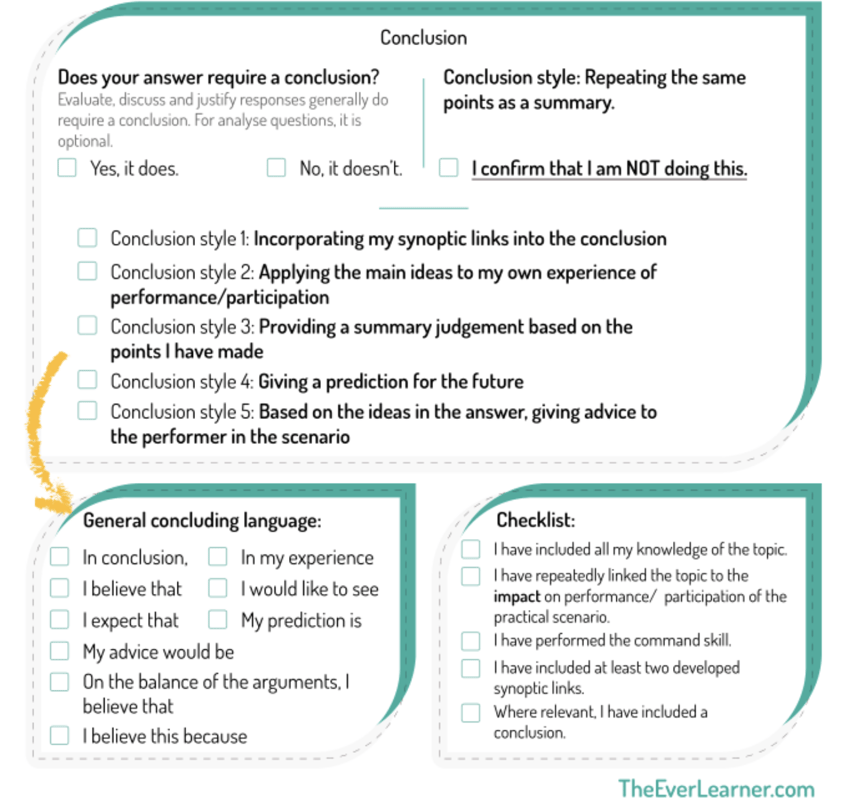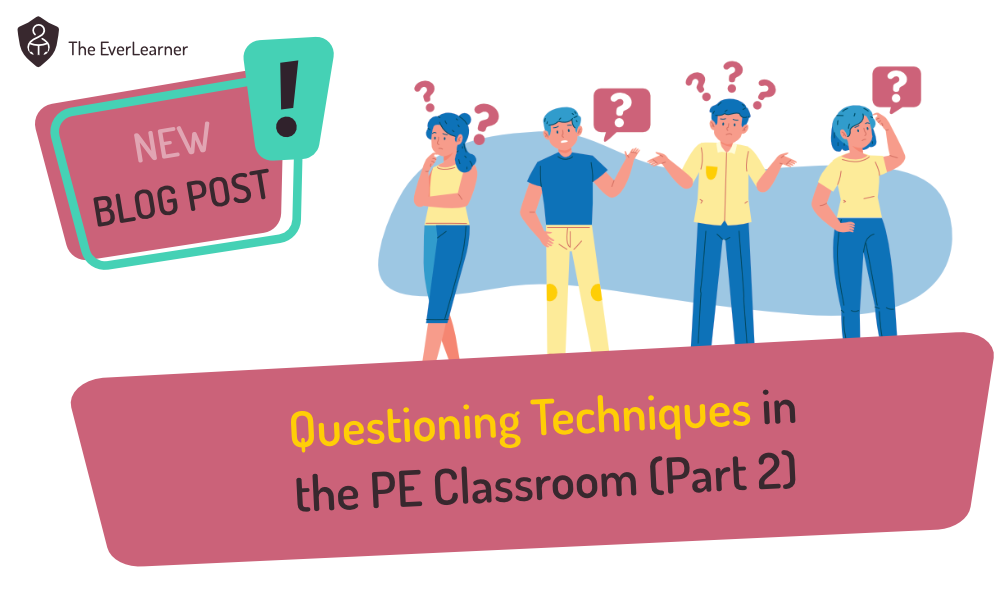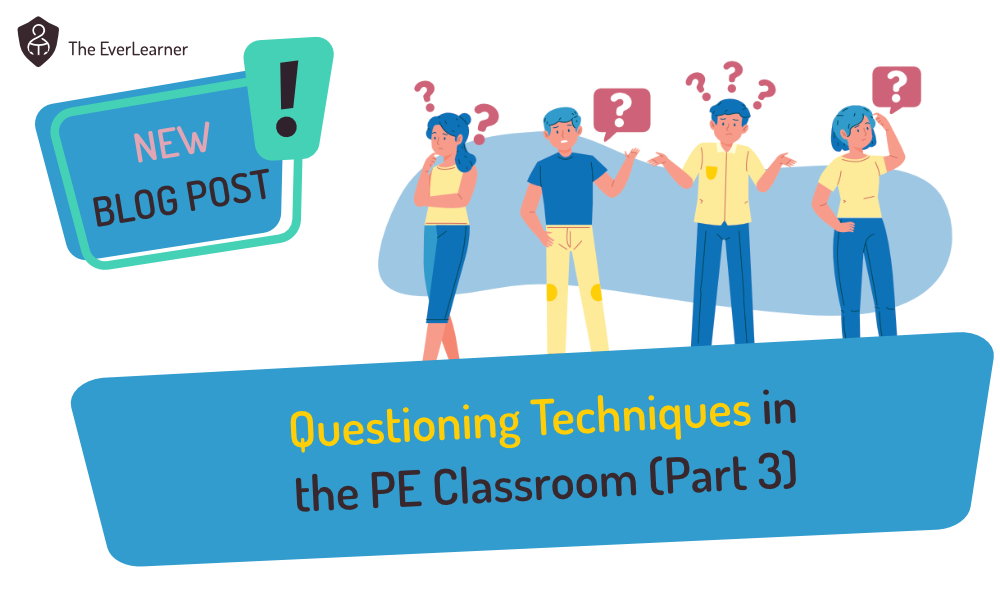Ten Misconceptions Students Have About Their PE Exams 2022
- “I won’t be tested on something not on the AEI.”
- “The AEI material is only for the levelled/extended writing questions.”
- “Exam papers can be predicted.”
- “I need to revise my knowledge, not skills.”
- “To analyse and to evaluate are the same thing.”
- “In ‘discuss’ questions, I just write down everything.”
- “Extended writing questions don’t need a conclusion.”
- “Extended writing is the most important skill in my exam.”
- “Explaining and describing are the same thing.”
- “Practical examples (AO2) are the easy bit.”
My PE revision for GCSE and A-level PE is, as this is published, three quarters completed. During the course of these total of 20 sessions, students have been asking me questions, many of which have themes of miscomprehension. So, I thought I would write this post as a FAQ-style resource to help teachers field the equivalent questions.
Student misconception 1: “I won’t be tested on something not on the AEI.”
This is not true. Exam boards can and will examine students on topics that are not named on the advance exam information (AEI). The AEI contains the topics for the “higher tariff” questions only and other topics will appear on their papers. There seems to be a theme of “I only need to learn the AEI material.” I strongly advise against this. Rather, students should learn all examinable material and should “over-learn” the AEI listed material.
See links below for an overview of the advance examination information along with my top recommendations for preparing your students.
↪️ Switch to AEI guidance AQA GCSE PE
↪️ Switch to AEI guidance Edexcel GCSE PE
↪️ Switch to AEI guidance OCR GCSE PE
↪️ Switch to AEI guidance AQA A-level PE
↪️ Switch to AEI guidance OCR A-level PE
Student misconception 2: “The AEI material is only for the levelled/extended writing questions.”
We have been asked this question numerous times in recent days: “Is the AEI-listed material only for the longer-answer [meaning ‘levelled’] questions”? The answer is “No.” The AEI covers “higher tariff” questions and it is not anticipated that this will only be levelled questions. AQA for GCSE, OCR for GCSE and A-level and Edexcel for GCSE and A-level have listed too much content for that content to only cover levelled questions. The only case where this might be possible is AQA A-level, where only a narrow range of topics have been listed on the AEI. My working assumption is that topics carrying a value of four marks or greater have been listed.
Student misconception 3: “Exam papers can be predicted.”
This has probably been the most common question: “James, what do you predict will be on the paper/on the extended writing?” When students ask this, it generally means they are trying to streamline their revision process because they have so much to do in so little time. However, students need to be reminded that no one can predict an exam paper. Anyone that tries to do so is seriously stepping out of their lane and should be challenged. You will notice that I highly value exam analysis and public exam infographics but these do not predict exams. They simply inform the students on the historic themes of their assessments.
✅ Read my blog on how I analyse exam papers.
Student misconception 4: “I need to revise my knowledge, not skills.”
Students ask questions very commonly about exam topics but very rarely about exam skills. This means they are thinking primarily about content. This is not surprising as, probably, the vast majority of their school lessons have been knowledge based, in most cases. The key to students “nailing” exams is them having the skill set of the exam. This includes an awareness of command terms, assessment objective requirements and having rigorously practised the types of questions they are likely to face. Once again, this is exactly why I publish exam infographics for students and ask them to ensure that they are meeting these requirements in preparation for their assessments.
Student misconception 5: “To analyse and to evaluate are the same thing.”
This is incredibly common and students seem to think that analysing is the same as evaluating: they think that, in both cases, you make strengths and weaknesses and a conclusion and that’s it. However, on all exam papers (the exception being OCR A-level PE), to analyse means to break concepts down into parts and to explain them. So, if a question asks students to analyse the different recovery methods a cyclist could use, they are being asked to break this down into concepts (ice baths, foam rollers, cool-down, compression garments, protein supplements, rehydration) and explain each one in turn. This is a critical difference.
✅ Access our free ROADMAP resources to help develop your students' understanding of command words
Student misconception 6: “In ‘discuss’ questions, I just write down everything.”
To “discuss” in GCSE and A-level PE exams is, in my opinion, the most challenging skill a student is likely to face, even if other questions have a higher tariff. The issue with the “discuss” command is that it hides other skills. In general, a discuss question can require any of the following skills:
This confuses students and I have been asked repeatedly about this skill by students in recent weeks. A well written exam question will give the student an indication of what skill is required. For example: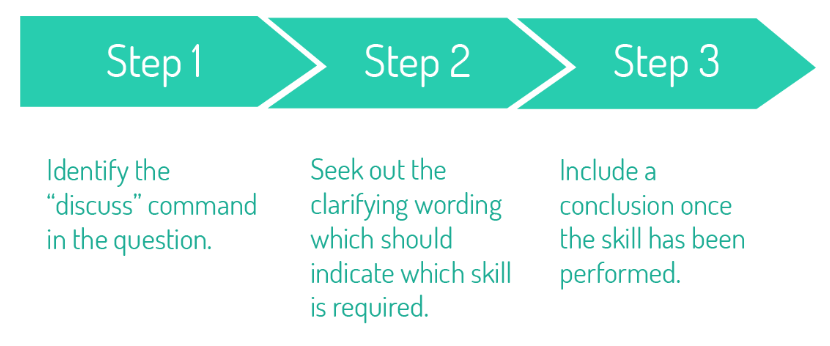
Student misconception 7: “Extended writing questions don’t need a conclusion.”
Whilst individual, exam-board-specific requirements should always override what I am about to write, teachers should be guiding their students to include a conclusion on the end of any extended writing piece. Well formatted conclusions add quality, context and, well, conclusion to a piece of writing. However, students must avoid simply relisting previously made points from their answer. Instead, they should follow the process highlighted in this extract from my new nine-mark extended writing resource:
You will notice that I am insisting that students do not repeat their points and that they select one of five conclusion structures, which are: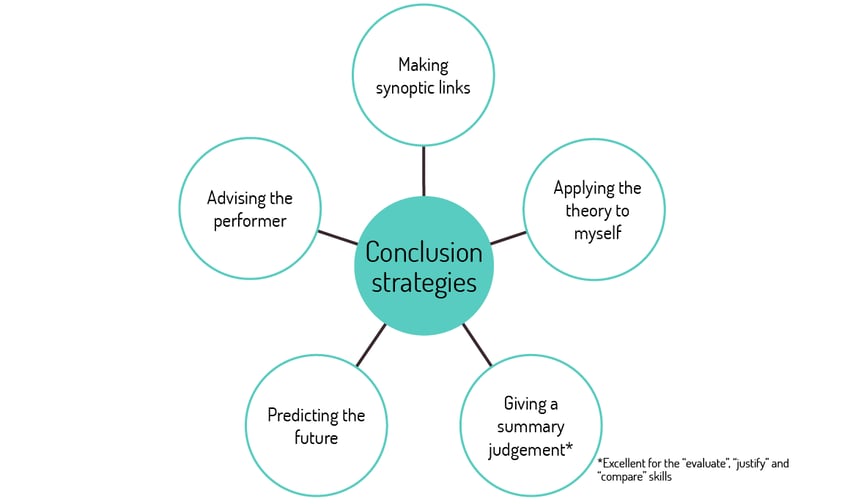
Students obviously struggle to consider what to include in a conclusion and I hope what is provided above can trigger some better ideas.
Finally, I would like to appeal to exam markers this summer: if in the script you are marking you are trying to decide between two possible marks for an extended writing piece, a well formatted conclusion needs to be credited. I hope that exam boards will support this statement.
Student misconception 8: “Extended writing is the most important skill in my exam.”
With the exception of AQA A-level PE, this is not the case. Take a look at these images from my published exam infographics to see what I mean:
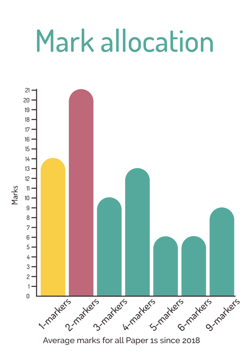

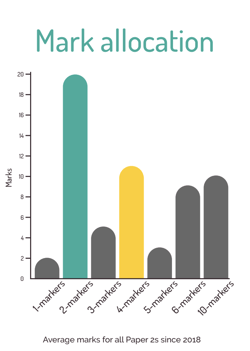
This suggests to us that students need a balanced and supported approach to their exams. First and foremost, students need a robust subject understanding and one which is broad enough to be applied successfully to practical examples. Built on top of this is the extended writing skill.
Student misconception 9: “Explaining and describing are the same thing in exam answers.”
I see this one almost constantly and, worryingly, I see very little distinction in the way that teachers are teaching these two critical skills.
Explaining is giving reasons or processes and will normally (not always) be asked combined with “how” or “why”. In general, “Explain why…” is asking for reasons and “Explain how…” is asking for processes. “Describe”, on the other hand, is asking for composition or characteristics. Therefore, students need to answer these questions differently. I have included this language as a very basic guide:
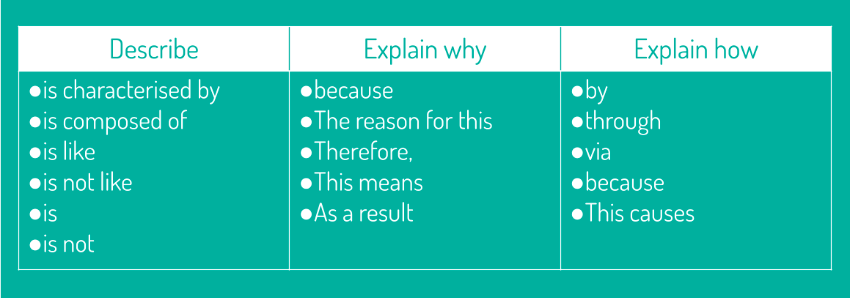
Student misconception 10: “Practical examples (AO2) are the easy bit.”
From the comments I am receiving, students seem to be heavily focussed on understanding content (AO1) and being able to perform the extended writing skill (mostly AO3). However, AO2—the capacity to link their knowledge to examples—is absolutely critical. It’s not that AO2 is more important than AO1 and AO3, it’s that students seem to be ignoring it. For this reason, I have written a series of practical examples based on the E-I-O technique.
These can be read here and set the standard for what students need to be able to do to achieve good AO2 credit.
Thank you for reading the post. I hope this proves useful for you and your learners (if you are a teacher). You will notice that, throughout the post, I have linked to other blogs from recent weeks. I encourage you to read them to support you with this post.
Thanks again.
%20Text%20(Violet).png)
